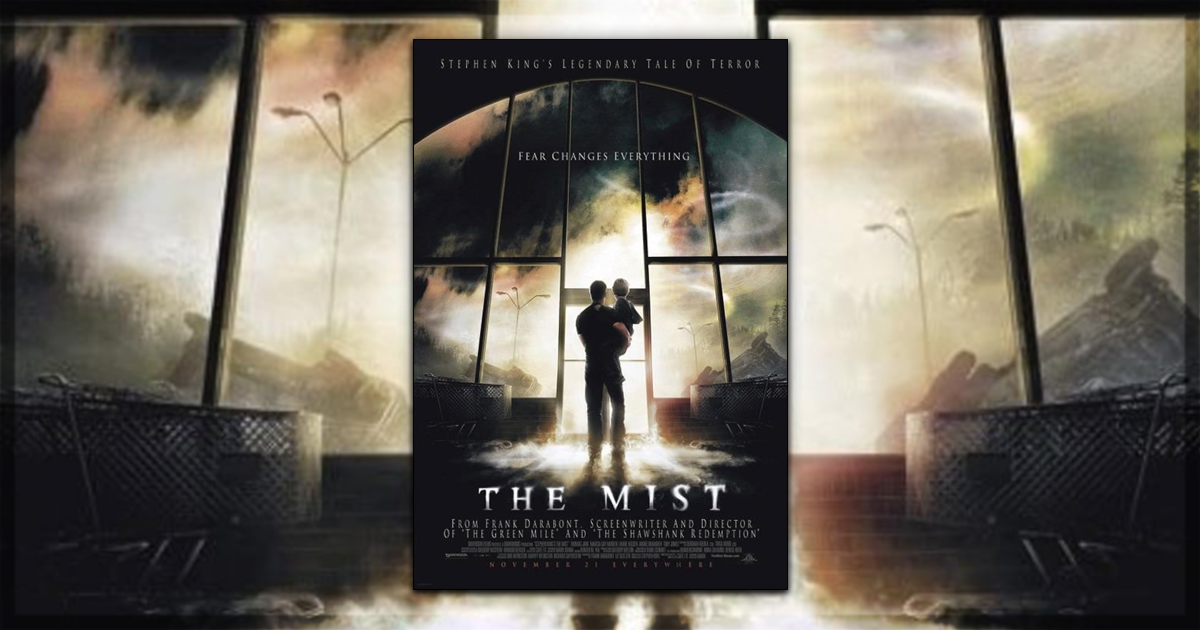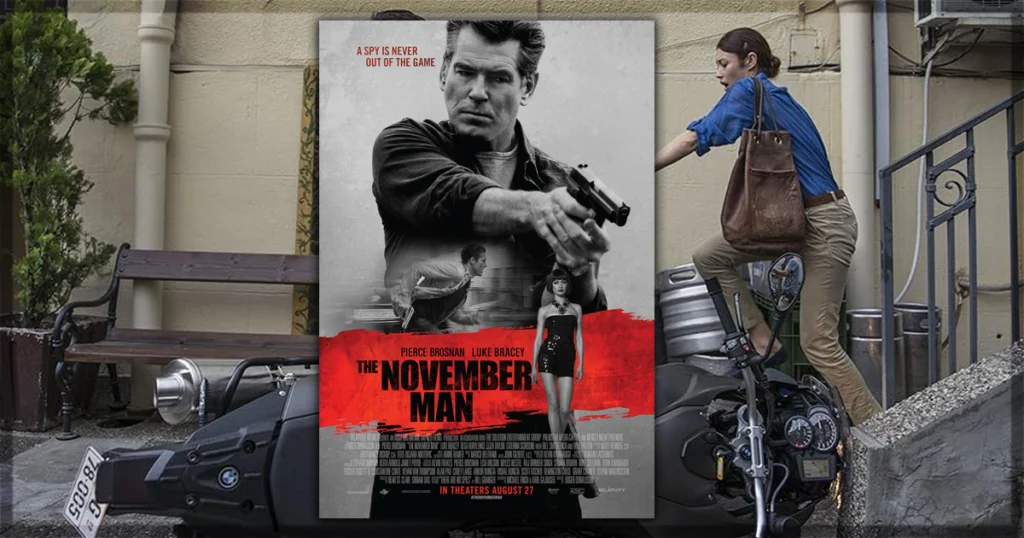Based on the novella of the same title and featured in the anthology Dark Forces by Stephen King, The Mist narrates the story of Bridgton, Maine. A city that suffered a thunderstorm and its citizens were affected by it, having their houses destroyed, energy cut, and no cellphone signal available. David Drayton (Thomas Jane), an artist, decides to ask for the insurance number of his neighbor, Brent Norton (Andre Braugher), whose tree fell over David’s lakehouse. They agree on the insurance terms, and Brent asks for a ride to the city’s downtown, where David, Brent, and David’s son, Billy (Nathan Gamble), head to the supermarket. While shopping, a local runs into the supermarket, drifting away from the mist and deadly clouds, which is a mystery. Suddenly, dozens of people are inside the store and must find out how to survive together.
Frank Darabont, who also directed King’s The Shawshank Redemption and The Green Mile, aims for atmosphere as the foundation of the thriller and horror. It provides a claustrophobic sensation, where the production design has narrowed corridors and a surplus of scenic elements in the set decoration. Darabont aims for the entropy’s amplification in that environment. People leave their loved ones behind and do not have any information on their behalf. It adds to the impromptu events that happen from the outside into the inside. The external monsters and dangers challenge their notion of protection when they first seek refuge there.
In this sense, the film’s development leans towards the meanings and why the events are happening. Thematically, the characters questioning their surroundings have an assertive religious subtext. Mrs. Carmody (Marcia Gay Harden) is the personification of the pastor leading their herd through a tough time. It uses Harden’s charisma and eloquence to create an obnoxious and hateful person who uses her religious fundamentalism to manipulate a mass of people. The spiritual symbolisms are also present in the external threats and reminiscences of the plagues of Egypt, as described by Moses in the book of Exodus. In the latter, the plagues are God’s punishment to the Pharoah for not letting the Israelites leave Egypt. Carmody herself quotes the book and cites the reasoning. However, Darabont uses the biblical passage visually to progress the narrative. Flies, wild octopuses, and spiders harm and kill the citizens. The mass death is of the people, not their livestock, as in the Bible. Also, there is the thunderstorm, three days of darkness, and the death of the firstborn. The film dialogues directly to the biblical passage and borrows a dramatic thread from the conflict between Carmody’s extremist religiosity and David’s desire for survival.
Visually, it successfully creates a tone of despair and constant fear. However, Rohn Schmidt’s cinematography is too dark and compromises understanding the actions displayed on the screen. Additionally, the visual effects fall into an uncanny valley, mainly if judged by the eyes of nowadays. It is crucial to contextualize the visual effects work to the era when it was produced and analyze the budget, processes, and historical context. The film cost 18 million dollars, 27 million corrected by inflation, which would still be a medium-sized budgeted film, and the VFX has a supporting role in world construction. It is still impressive work when it weighs with the production scope and how the scale focuses on the microscopy, but it impacts when it escalates to the macro.
Likewise, the film features emotional choices that uplift the final result. The last minutes are heartbreaking because Darabont films it from a distance. We do not see the actions happening directly, only its consequences. And those have an impactful effect on the story and its conclusion. The director sets up an ending that closes a claustrophobic and religious-based tale by symbolizing the sacrifice inside a car. It is a coherent and memorable scene, which leads to a final sequence of paramount effects.
The Mist dives deep into religious tales and an apocalyptic setting to understand how different people react to a world-ending situation. It uses the best of Marcia Gay Harden to portray an abominable antagonist willing to sacrifice people because of her beliefs. Also, its conclusion delivers an unforgettable ending to a roller-coaster story, both in its structure and execution. Darabont drags some of the segments, but the film succeeds in providing a bleak and hopeless story. The visuals are too dark sometimes, and the VFX may cause strangeness while watching. The film works well as a thriller that analyzes human behavior and reactions when the world is about to end.


